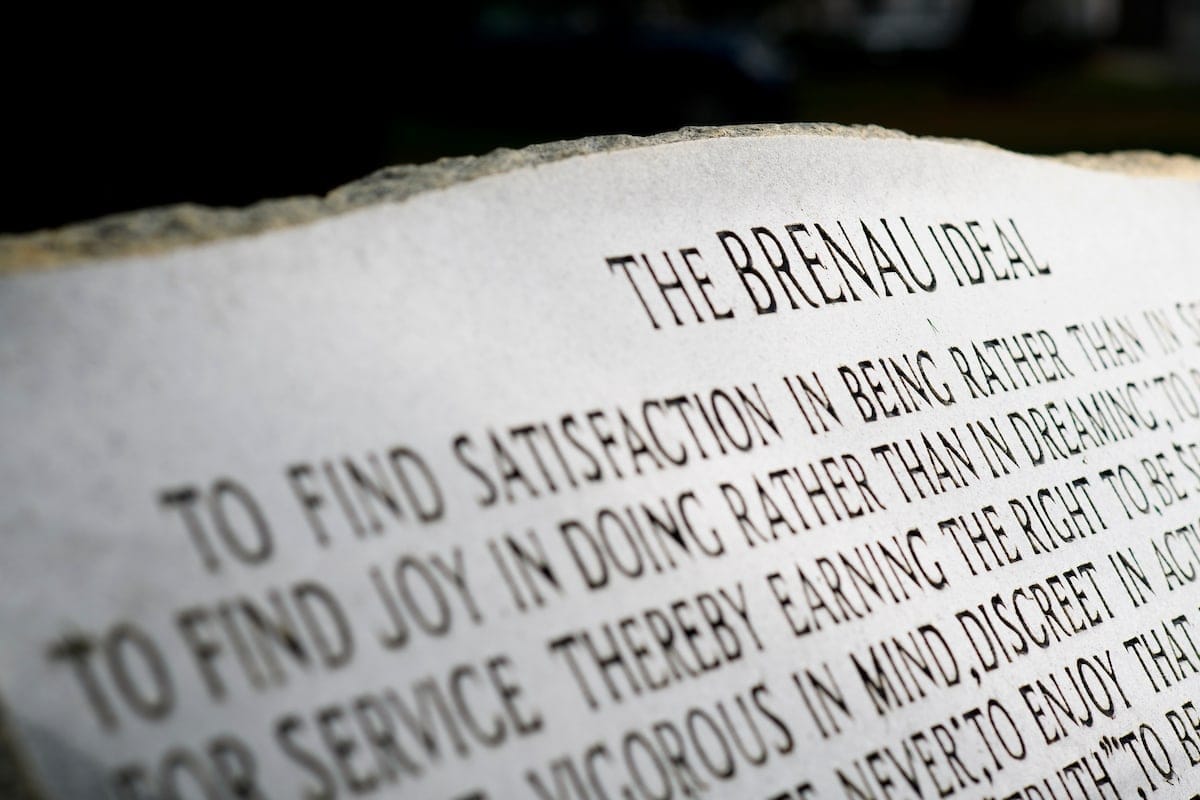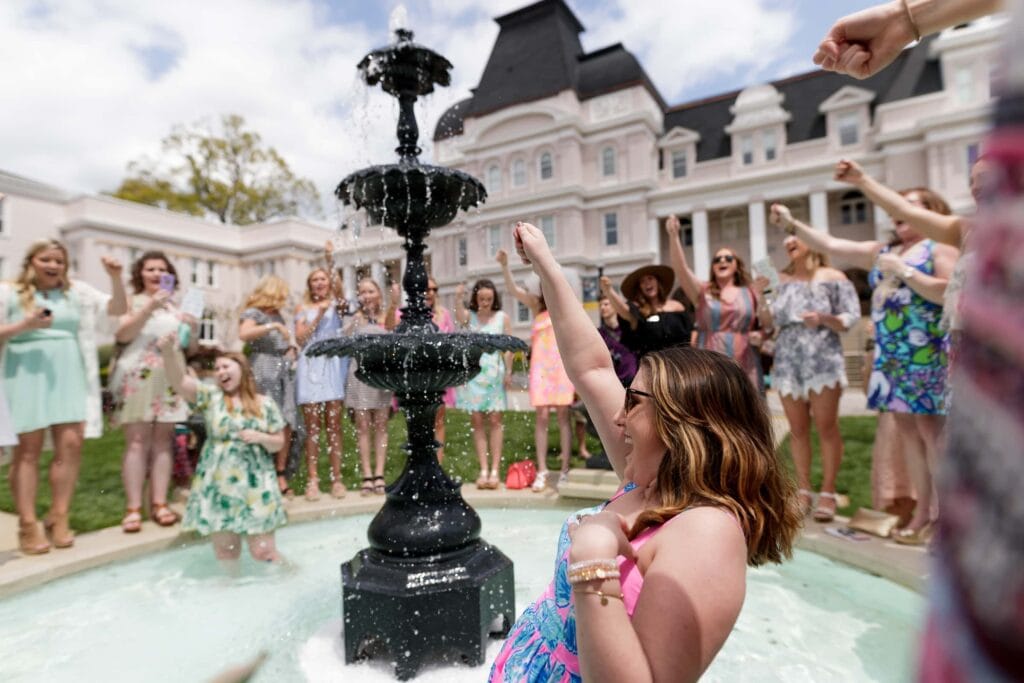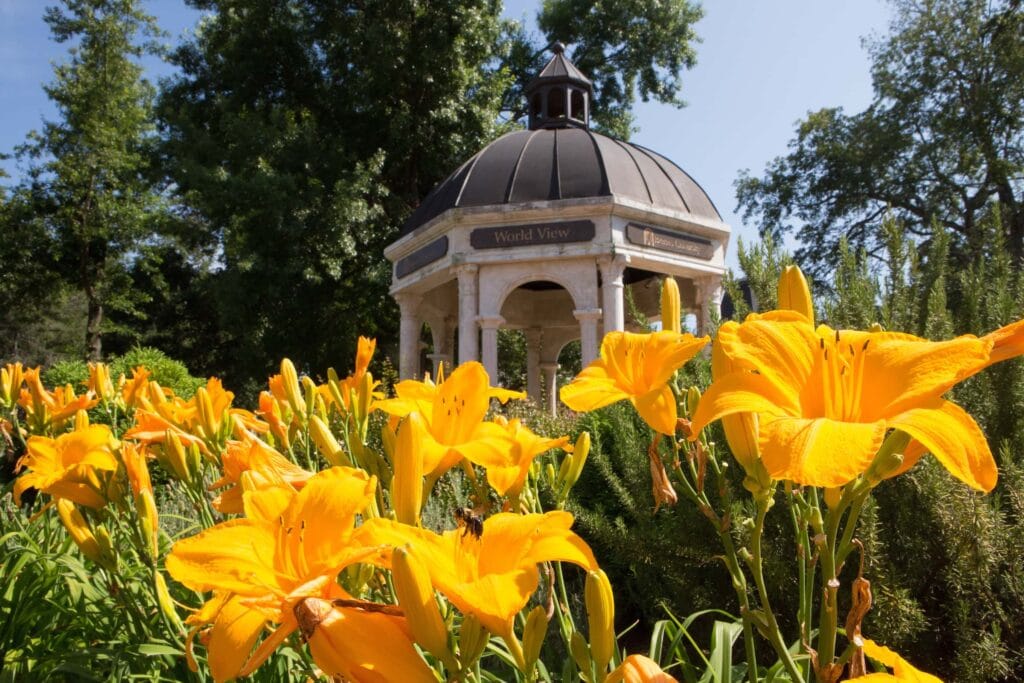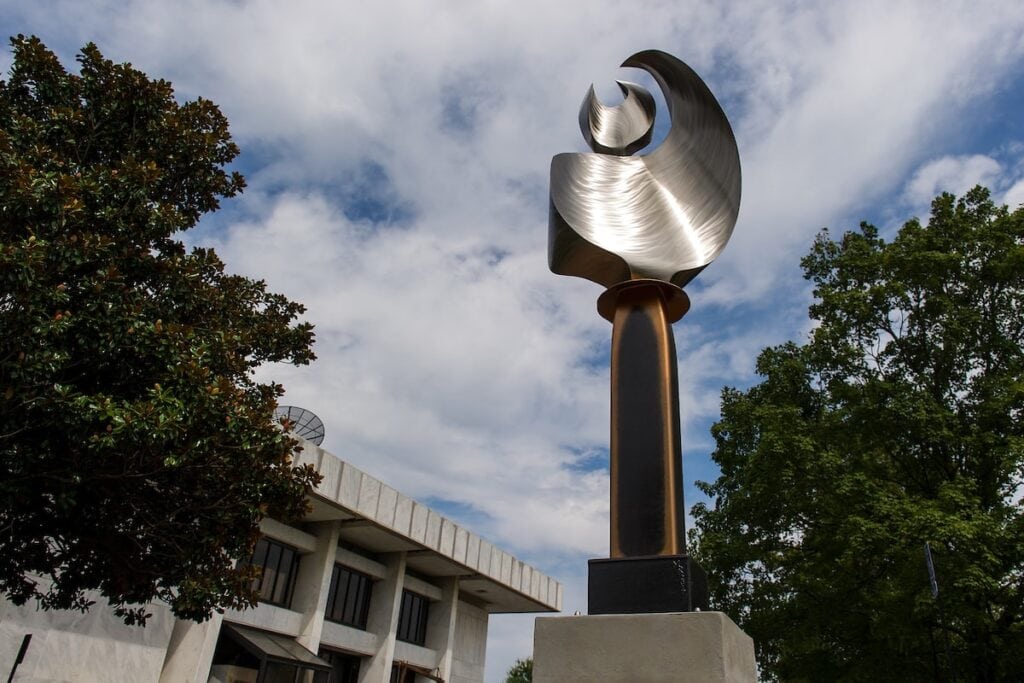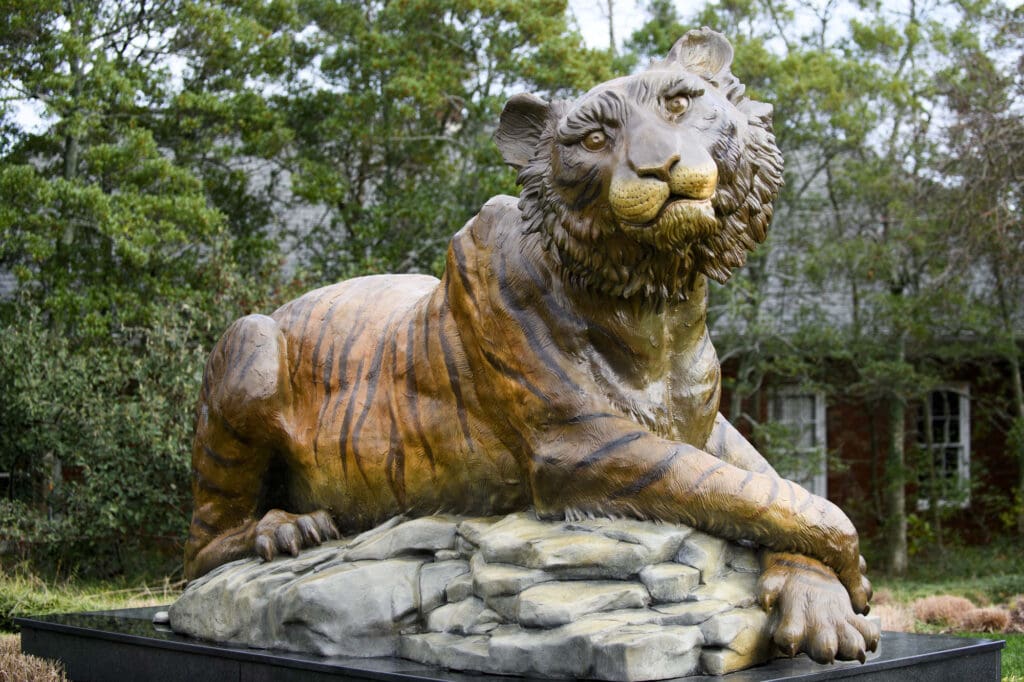The monuments, statuary and architecture of Brenau distinguish its uniqueness and symbolize the character of its mission and student body. The weather vane located in front of the Owens Student Center suggests that Brenau students come from the north, south, east and west. Four bronze statues also represent different versions of our students: Two figures of young Brenau women stand in front of the Lessie Southgate Simmons Memorial Hall; a statue of a modern-day Brenau scholar, staying awake with a cup of coffee while typing on her laptop, is located on the front lawn; and a sculpture of a student of the past sits inside the Daniel Pavilion.
Crow’s Nest
The Crow’s Nest has occupied several spots on front campus and is currently near the site of the first iteration given to the college by the class of 1905. Only seniors are allowed to ascend to its top. Tradition states that juniors are allowed to go as far as the second steps, sophomores are allowed on the first steps around the large platform, and first-year class must remain on the ground. The changing of rank takes place on May Day with the passing of the ivy and daisy chains along with the robing of upcoming seniors. The Crow’s Nest allows students to understand and appreciate the rising ranks of each class.
The Brenau Ideal
The Brenau Ideal, originally written by President H.J. Pearce, is carved into a granite slab located at the base of the Crow’s Nest on the front lawn. Learn More about the Brenau Ideal
